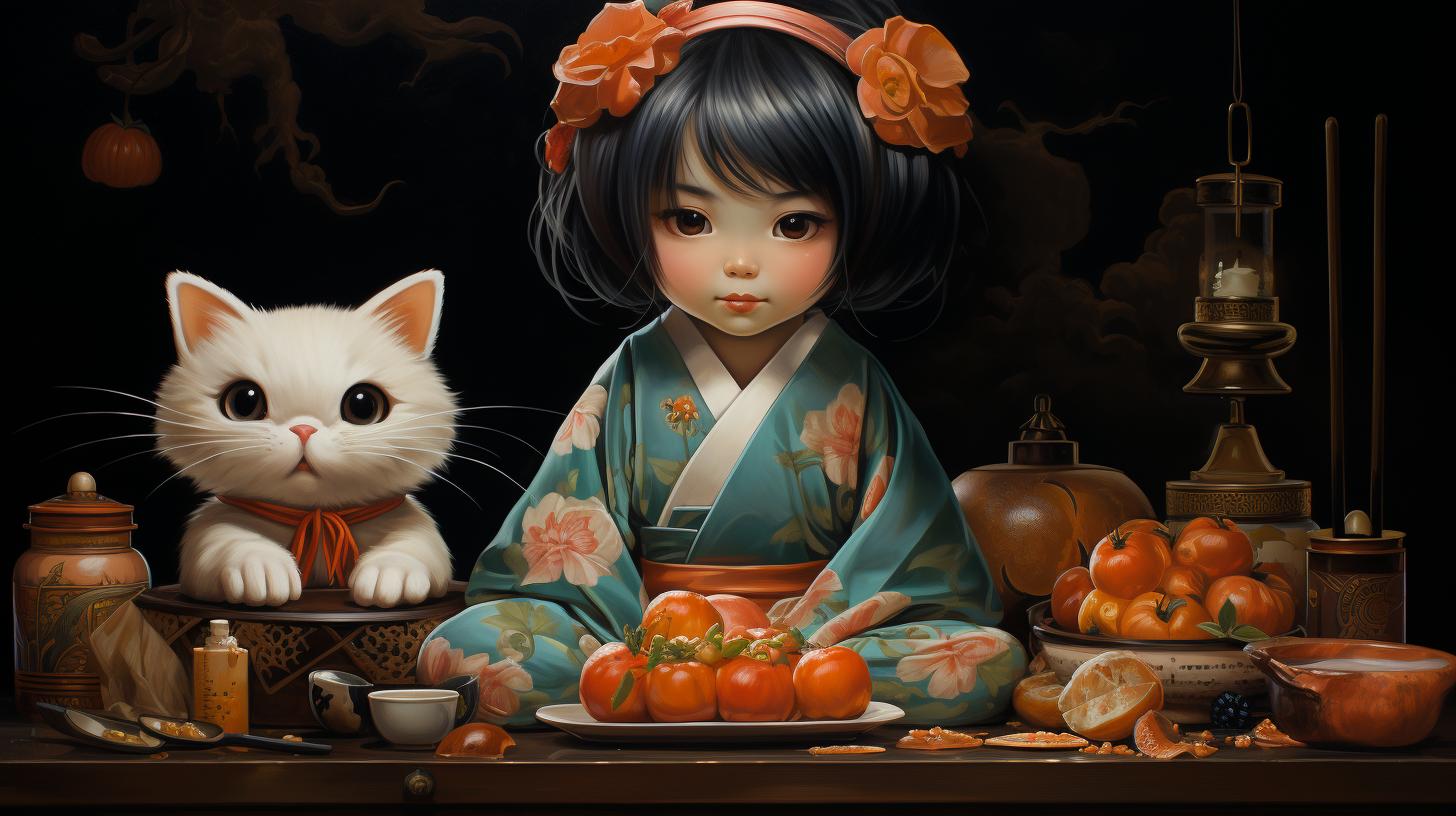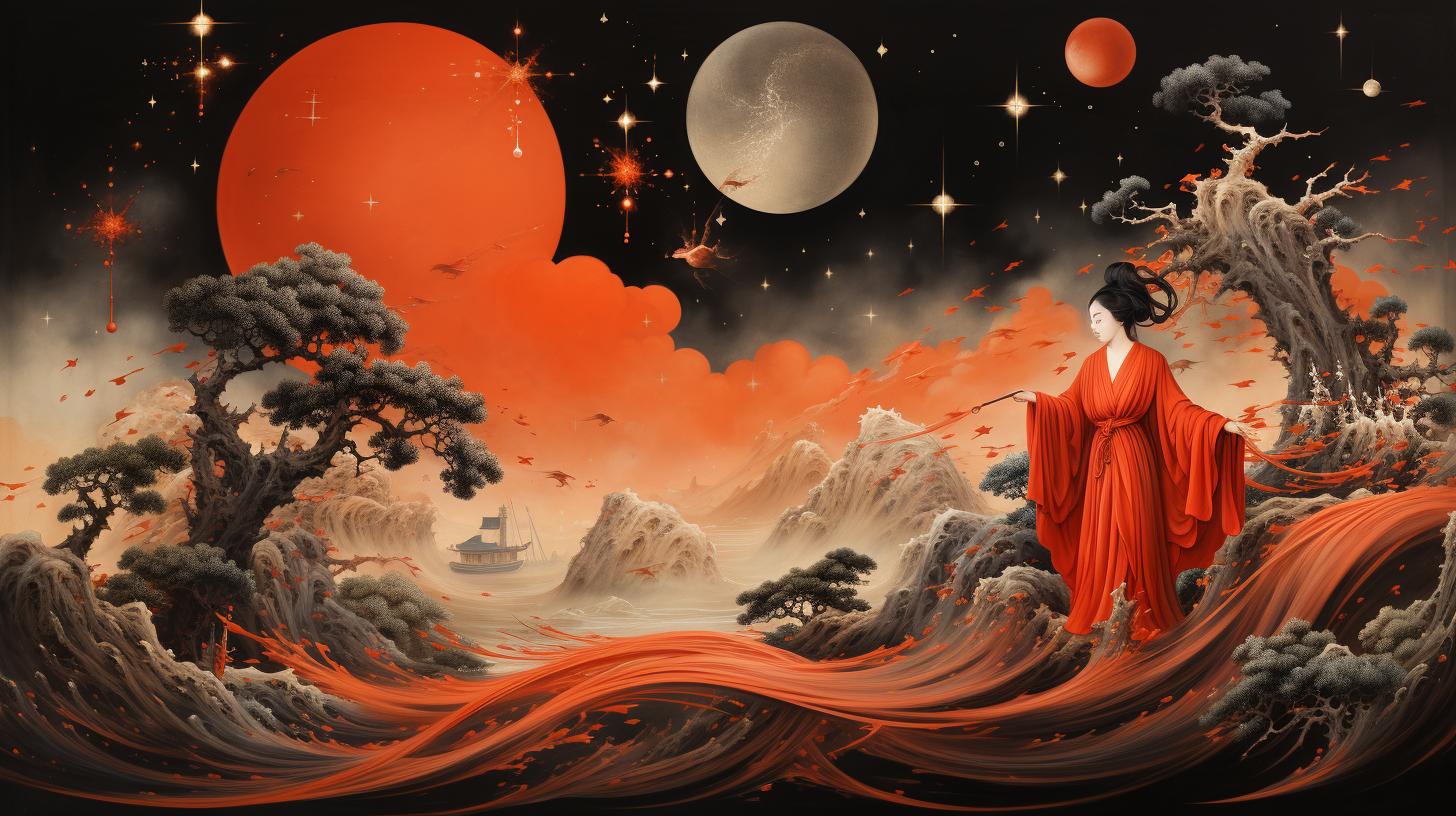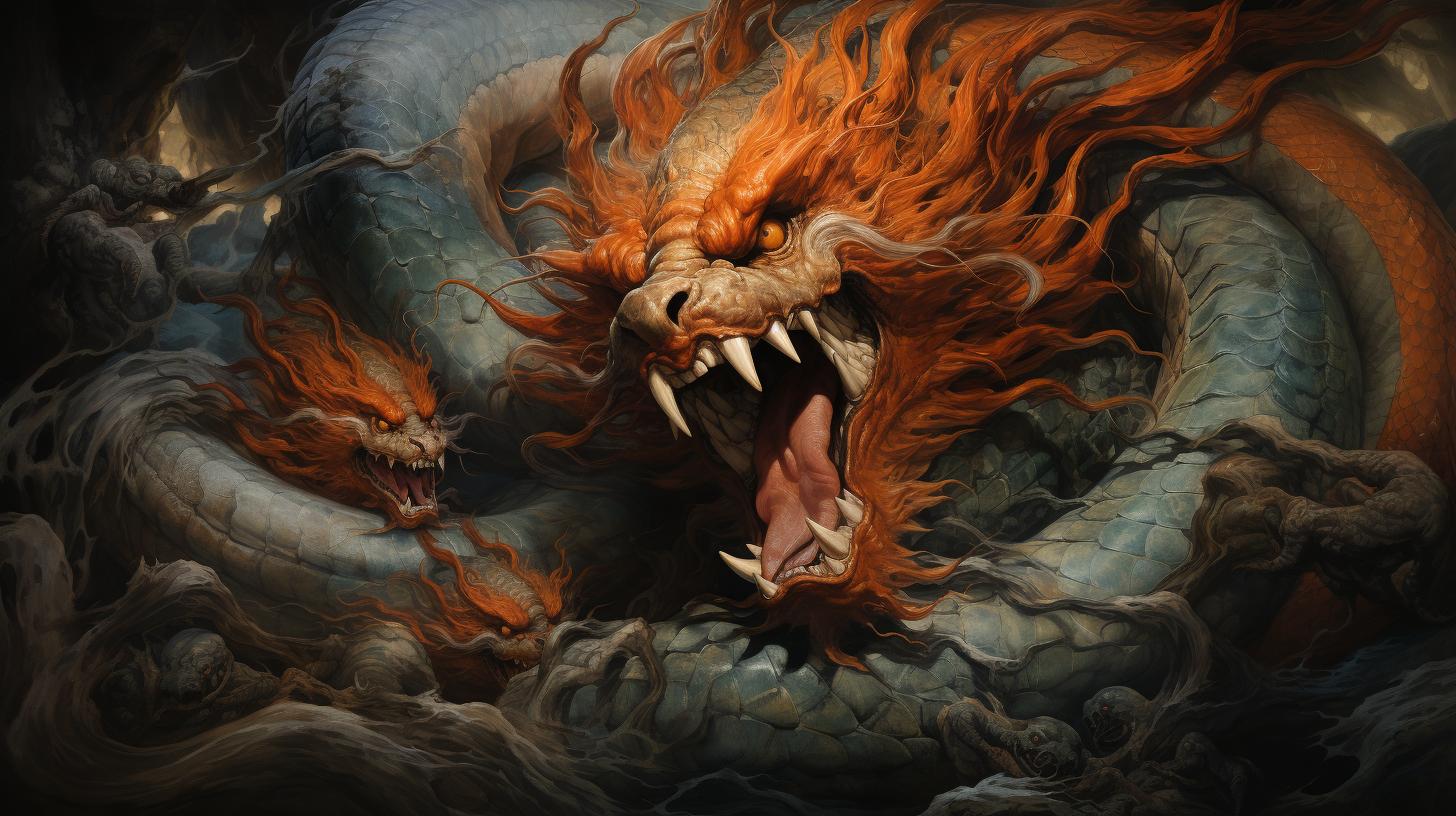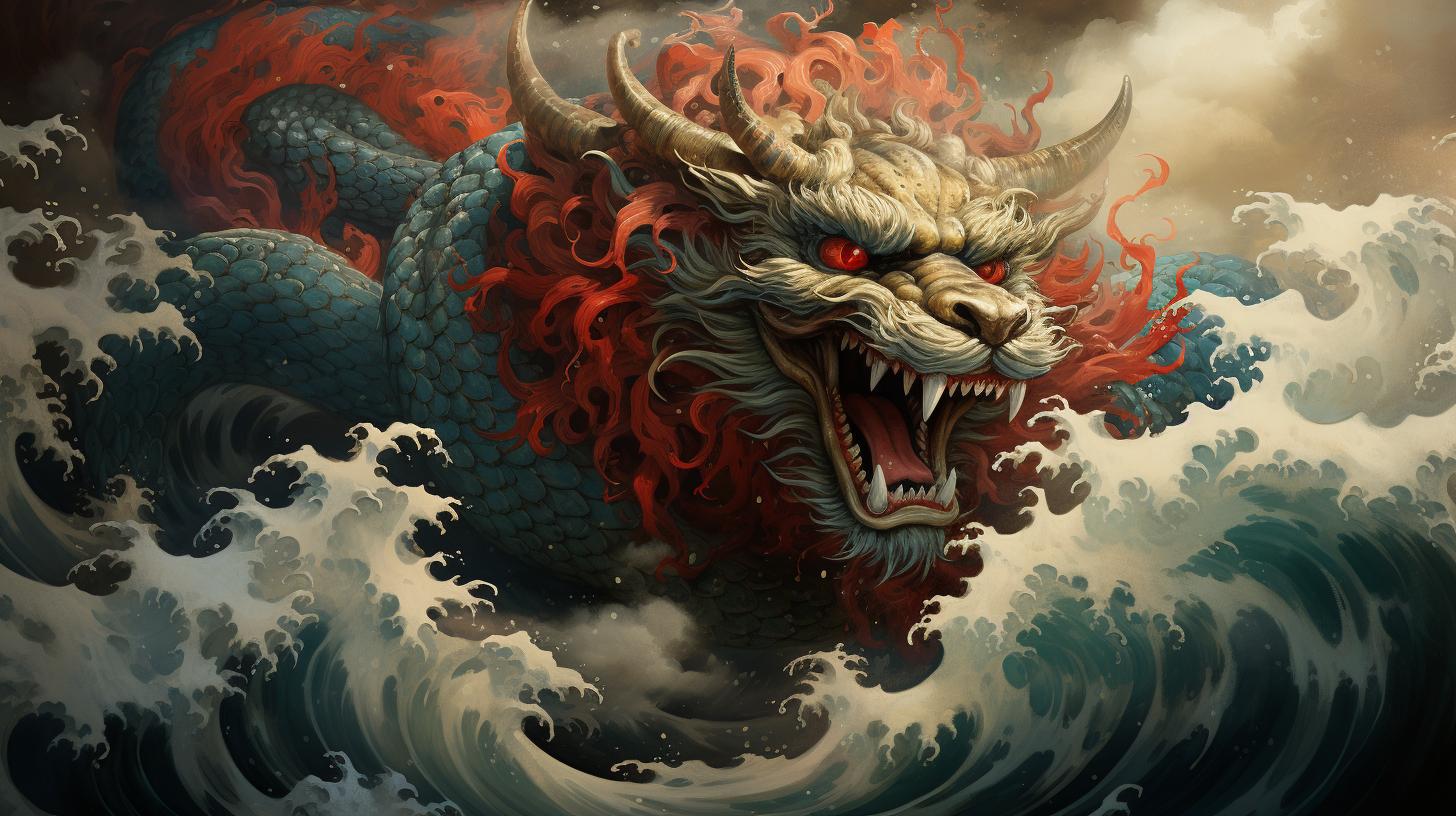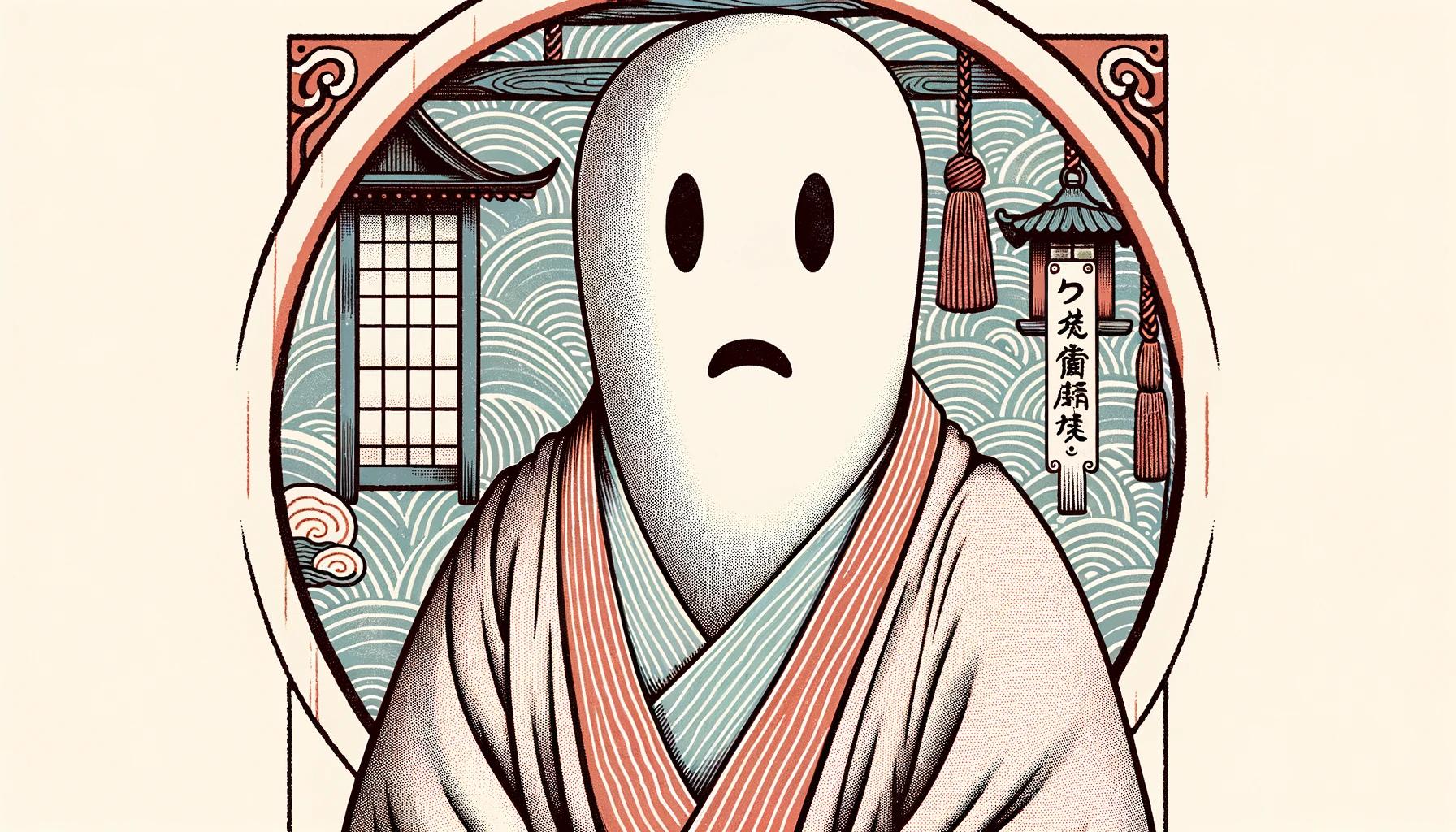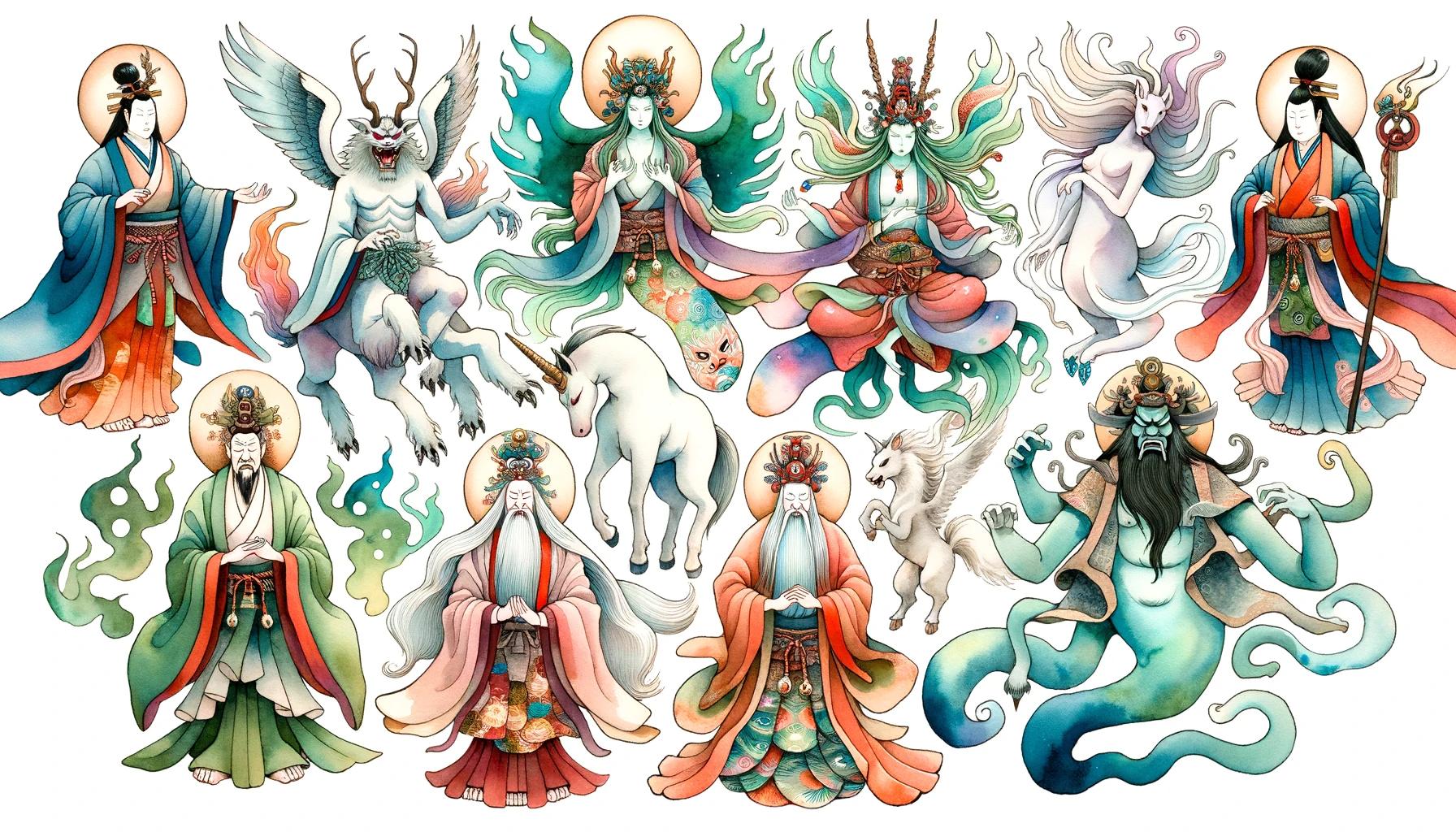Uke Mochi: The Japanese Goddess of Food Revealed
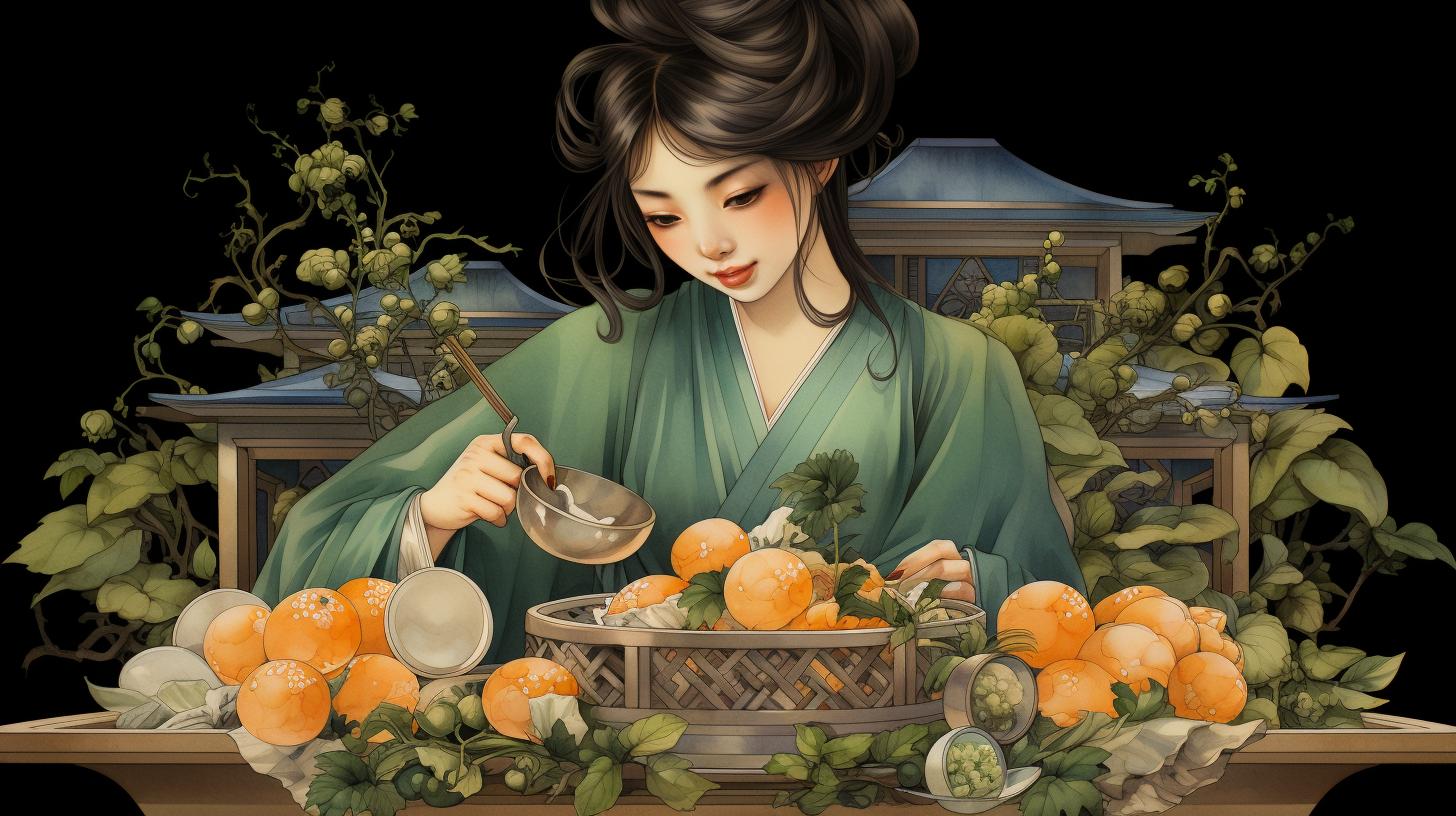
Uke Mochi, a Japanese goddess of food, holds a significant role in Japanese mythology. Legends depict her as a divine provider, offering a variety of foods to deities like Tsukuyomi or Susanoo.
However, her story takes a tragic turn when she receives an unexpected reaction to her offerings. Venerated in Shinto traditions, Uke Mochi continues to shape Japanese cuisine and cultural practices. Her representation in art and popular culture further solidifies her legacy as a powerful and influential figure.
Discover the origins, symbolism, and contemporary relevance of Uke Mochi through this comprehensive exploration.
The Origins of Uke Mochi
The story of Uke Mochi, a prominent figure in Japanese mythology, has fascinated generations. Uke Mochi’s origins can be traced back to the rich tapestry of Japanese folklore and religious beliefs.
This section explores the intriguing aspects of her mythological existence and her role as the goddess of food.
Uke Mochi in Japanese Mythology
Within the pantheon of Japanese deities, Uke Mochi holds a distinct place. She is depicted as a powerful goddess who embodies the essence of abundance and nourishment. While her origins may differ in various versions of the myth, one consistent thread is her affiliation with the celestial realm and her connection to the natural world.
According to some accounts, Uke Mochi is believed to be the result of Amaterasu, the revered goddess of the sun, creating her from her very own body. This ancestral tie serves to elevate Uke Mochi’s status and highlights her close relationship with the divine realm.
Uke Mochi’s Role as the Goddess of Food
Uke Mochi’s significance in Japanese mythology primarily revolves around her role as the goddess of food. In ancient Japan, food held immense cultural and spiritual importance, and thus, Uke Mochi’s domain became integral to the daily lives of the people.
As the goddess of food, Uke Mochi was responsible for providing sustenance and nourishment to both deities and humans alike. She symbolized the bountiful harvests, the abundance of marine life, and the provision of essential nutrients.
Furthermore, Uke Mochi’s association with culinary expertise and her ability to produce vast quantities of delicious food were revered and sought after. Her divine culinary offerings were seen as a gift from the heavens, representing prosperity and fertility.
Through her role as the goddess of food, Uke Mochi personified the fundamental sustenance necessary for survival and became an essential figure in Japanese mythology and culture.
Uke Mochi’s Mythological Encounter
According to Japanese mythology, Uke Mochi’s mythological encounter is a captivating tale of divine interactions and unforeseen consequences.
Uke Mochi and Tsukuyomi (or Susanoo)
One version of the story involves Uke Mochi’s encounter with Tsukuyomi, the god of the moon. It is said that Tsukuyomi was invited to a feast hosted by Uke Mochi, where she showcased her ability to create food from her own body.
Another variant of the tale involves Susanoo, the storm god, as the guest. The specifics may vary depending on the source, but both versions highlight Uke Mochi’s role as a generous provider of sustenance.
The Offerings and Consequences
During the feast, Uke Mochi presented an array of sumptuous offerings, including rice, fish, and meat. However, an unexpected turn of events occurred when Tsukuyomi (or Susanoo) became disgusted by Uke Mochi’s presentation and killed her.
Her death resulted in the creation of various objects from her lifeless body, such as animals, grains, and even silkworms. These objects, in turn, played crucial roles in agriculture and the production of silk, emphasizing the divine significance of Uke Mochi’s sacrifice.
This mythological encounter showcases the intricate relationship between gods and humanity, as well as the complex intertwining of life and death, creation and destruction. The consequences of Uke Mochi’s offerings and their transformation into essential resources further demonstrate her vital role in Japanese mythology and cultural traditions.
Symbolism and Significance of Uke Mochi
Uke Mochi, the Japanese goddess of food, holds deep symbolism and significance within Japanese mythology and culture. Her divine presence as a provider and her gifts to humanity highlight her unique role and impact.
Uke Mochi as a Divine Provider
As a deity associated with food, Uke Mochi represents the sustenance and nourishment that the natural world provides. She embodies the idea of abundance and fertility, symbolizing the interconnectedness between humans and the bountiful earth.
Her role as a divine provider showcases the importance of food in sustaining life and fostering prosperity. Uke Mochi’s presence emphasizes gratitude for the gifts of nature and the recognition of the sacredness of the food we consume.
Uke Mochi’s Gifts to Humanity
Uke Mochi’s interaction with Tsukuyomi or Susanoo, depending on the version of the myth, led to the creation of essential elements for human existence. From her body, various gifts emerged, ranging from animals and grains to silk-producing worms.
This narrative highlights the significance of Uke Mochi’s offerings to humanity. The animals provided sustenance, the grains supported agriculture, and the silk contributed to the development of weaving and craftsmanship. These gifts bestowed by Uke Mochi hold cultural and practical importance, shaping the livelihood and development of Japanese society throughout history.
Uke Mochi’s gifts also symbolize the sacredness of food preparation, emphasizing the artistry and care involved in nourishing oneself and others. Through her offerings, Uke Mochi underscores the cultural significance of food as a medium for expressing gratitude, creativity, and communal connections.
In conclusion, Uke Mochi’s symbolism as a divine provider and her gifts to humanity hold immense cultural and spiritual significance in Japanese mythology. Her role amplifies the importance of recognizing the interconnectedness between humans and the natural world, honoring the gifts of food and fostering a sense of gratitude for the sustenance it provides.
Uke Mochi in Shinto Traditions and Practices
Uke Mochi’s significance in Japanese culture is deeply rooted in Shinto traditions and practices. This section explores the veneration of Uke Mochi in shrines and the festivals and rituals dedicated to honoring her.
Uke Mochi’s Veneration in Shrines
Throughout Japan, numerous shrines are dedicated to the worship of Uke Mochi. These sacred sites serve as places of reverence, where believers pay homage to the goddess of food. Within the shrine grounds, visitors often find statues, symbols, and altars dedicated to Uke Mochi.
Offerings such as rice, fruits, and sake are presented as a display of gratitude and devotion.
Among the most renowned shrines where Uke Mochi is venerated is the Grand Shrine of Ise in the Mie Prefecture.
This spiritual sanctuary holds immense importance in Shintoism and attracts countless pilgrims seeking blessings and guidance from Uke Mochi, the divine provider of sustenance.
Festivals and Rituals Honoring Uke Mochi
Shinto festivals and rituals play a vital role in celebrating the legacy of Uke Mochi and expressing gratitude for her blessings.
These events not only showcase the cultural significance of Uke Mochi but also serve as an opportunity for communities to come together in celebration.
One notable festival dedicated to Uke Mochi is the Uke Mochi Festival, held annually at various shrines across Japan.
This vibrant event features lively processions, traditional performances, and elaborate ceremonies dedicated to honoring the goddess. Participants take part in rituals and prayers expressing their appreciation for Uke Mochi’s abundance and blessings.
Additionally, rituals such as food offerings and purification ceremonies are observed throughout the year, ensuring a continuous connection between believers and Uke Mochi’s divine presence. These customs reflect the deep-rooted relationship between the Japanese people and the goddess of food.
In Shinto traditions and practices, Uke Mochi’s veneration in shrines and the festivities held in her honor serve as a reminder of her role as a provider of nourishment and the intertwining of food and spirituality in Japanese culture.
Cultural Impact and Relevance
The cultural impact and relevance of Uke Mochi, the Japanese goddess of food, extend beyond mythology and into various aspects of Japanese society. Her influence can be seen prominently in Japanese cuisine and culinary arts, as well as in the broader food culture of the country.
Uke Mochi in Japanese Cuisine and Culinary Arts
Uke Mochi’s association with food has made her an integral part of Japanese culinary traditions. Chefs and food enthusiasts draw inspiration from her mythical role as a divine provider, infusing their creations with a sense of reverence and gratitude for the sustenance she symbolizes.
Traditional dishes like sushi, tempura, and miso soup, prepared with meticulous attention to detail, reflect the deep-rooted connection between Uke Mochi and Japanese culinary heritage.
In addition to specific dishes, Uke Mochi’s influence can be seen in the emphasis on freshness, seasonality, and presentation in Japanese cuisine. The concept of umami, a savory taste that adds depth and richness to dishes, is also deeply intertwined with Uke Mochi’s legacy, as it enhances the overall gastronomic experience and celebrates the abundance of flavors she bestowed upon humanity.
Uke Mochi’s Influence on Food Culture
Beyond the realm of cuisine, Uke Mochi’s influence extends to the broader food culture of Japan. The appreciation for quality ingredients, the respect for nature’s bounty, and the harmonious balance of flavors can be attributed, in part, to the reverence for Uke Mochi and her gifts.
These values are deeply ingrained in Japanese society, reflected in traditional tea ceremonies, seasonal festivals, and even everyday dining practices.
Uke Mochi’s impact on food culture can also be seen in the emphasis on mindful eating and mindful preparation. The ritualistic aspects of food, such as the art of serving, the arrangement of dishes, and the shared experience of communal meals, all draw inspiration from the divine connection between Uke Mochi and the sustenance she provides.
In a fast-paced world, the appreciation for food as a source of nourishment and connection remains a cherished aspect of Japanese culture.
- The reverence for Uke Mochi in Japanese culinary traditions
- The incorporation of her mythical role as a divine provider in dishes
- The emphasis on freshness, seasonality, and presentation in Japanese cuisine
- The celebration of umami as a reflection of Uke Mochi’s legacy
- The influence on broader food culture, including tea ceremonies and festivals
- The promotion of mindful eating and mindful preparation inspired by Uke Mochi
- The continuing appreciation for food as a source of nourishment and connection
Uke Mochi in Popular Culture and Art
Uke Mochi, the Japanese goddess of food, has left an indelible mark on popular culture and art.
Her captivating presence and mythological significance have inspired various artistic interpretations across different mediums.
Representations in Literature, Films, and Music
Literature has embraced the enigmatic aura of Uke Mochi, weaving her tales into captivating stories. Authors have been captivated by her duality as both a divine provider and a tragic figure.
Her character appears in numerous novels, exploring her mythology and showcasing her role in shaping Japanese traditions.
The world of cinema has also been fascinated by Uke Mochi’s narrative. Filmmakers have depicted her mythical encounter and the consequences of her generosity, creating visually stunning scenes that resonate with audiences.
These cinematic interpretations serve as a testament to the enduring allure of Uke Mochi’s story.
Furthermore, Uke Mochi’s influence extends to the realm of music. Musicians have drawn inspiration from her legend, incorporating her themes into their compositions.
Her story of abundance and loss resonates through haunting melodies and lyrical storytelling, captivating listeners who are transported into the realm of Japanese mythology.
Visual Depictions and Artistic Interpretations
The visual arts have provided a canvas for artists to explore Uke Mochi’s symbolism and significance.
Painters and illustrators have captured her divine presence, often portraying her surrounded by bountiful harvests, invoking a sense of abundance and prosperity.
Sculptors have also sought to immortalize Uke Mochi, crafting intricate statues that showcase her ethereal beauty and enigmatic persona.
These sculptures serve as reminders of her mythical encounter, eliciting a sense of awe and reverence among viewers.
In addition, Uke Mochi’s captivating story has inspired contemporary artists to create innovative and thought-provoking installations.
Through their artwork, they explore themes of nourishment, consumption, and the cycle of life and death, drawing parallels to Uke Mochi’s fateful encounter with Tsukuyomi or Susanoo.
Conclusion
Uke Mochi’s profound impact on popular culture and art is a testament to the enduring power of her mythology. Through literature, film, music, and the visual arts, her story continues to captivate and inspire, inviting audiences to delve into the rich tapestry of Japanese folklore and explore the complex relationship between food, divinity, and humanity.
The Legacy of Uke Mochi
As the goddess of food in Japanese mythology, Uke Mochi’s legacy extends beyond her role as a divine provider. Her influence and worship continue to resonate through the ages, both in traditional practices and contemporary interpretations.
Uke Mochi’s Continued Influence and Worship
The reverence for Uke Mochi remains strong in Japanese culture, where she is honored for her association with sustenance and abundance. Many individuals and communities still pay homage to her in various ways.
- Shrine Veneration: Shrines dedicated to Uke Mochi serve as focal points for her worship. Devotees offer prayers and offerings to seek her blessings for bountiful harvests, culinary endeavors, and prosperity.
- Festivals and Rituals: Throughout the year, festivals and rituals celebrating Uke Mochi take place to commemorate her mythical deeds.
These events bring people together to express gratitude for her gifts and to seek her continued favor.
Contemporary Relevance and Interpretations
While rooted in ancient mythology, Uke Mochi’s significance transcends time and continues to inspire modern perspectives and artistic expressions.
- Cuisine and Culinary Arts: Uke Mochi’s connection to food resonates in contemporary Japanese cuisine.
Chefs draw inspiration from her mythical offerings, incorporating traditional ingredients and techniques into innovative dishes.
- Food Culture: Uke Mochi’s cultural impact can also be seen in the broader food culture of Japan.
Her influence on agriculture, food production, and culinary traditions remains prevalent and cherished.
Moreover, Uke Mochi’s story has been depicted in various forms of artistic media, including literature, films, music, and visual arts.
These interpretations capture the essence of her legend, immortalizing her in popular culture.
In conclusion, Uke Mochi’s legacy endures through the continued worship and influence she holds in Japanese society. Her divine association with food and abundance continues to shape culinary practices and inspire contemporary interpretations, making her a timeless figure in mythology and culture.
.

